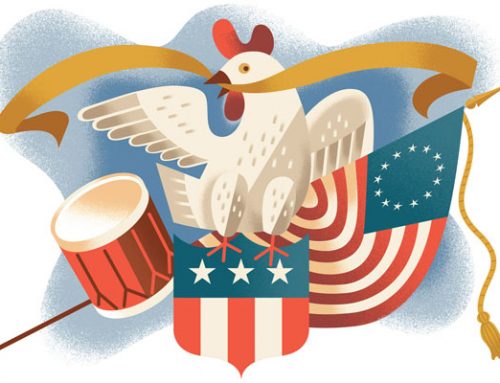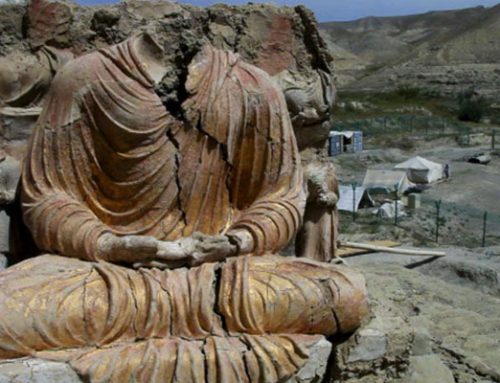
Shuri, known as Epa, goes back and forth between his tribe and rural communities on the Curanja River in Peru’s Amazon region. Credit: Jason Houston
HIS name is Shuri, but everyone calls him Epa, which means father in the indigenous Pano language family. His wizened face and bare, gnomish feet are familiar to the villagers who live along the Curanja River, which flows through some of the densest rain forest of Peru’s vast Amazon region.
Most of Epa’s tribe remains deep in the jungle, unclothed, hunting with bows and arrows, picking medicinal plants to ward off illness, and avoiding outsiders. But such isolated peoples can no longer depend on the forest as a refuge. In the past year, throughout the Amazon, they have begun to emerge in settled areas in unpredictable, disturbing and occasionally violent ways, often because of hunger or desperation.
I met Epa at his camp just upstream from the last village, where the unbroken jungle begins. He boasts of his hunting prowess. But he also wears a soccer shirt and nylon shorts and spends time among and near the settled people on the river — indigenous people, only a generation or two removed from forest life, who have welcomed him into their villages.
Last October, the villagers traveled in wooden canoes to vote in local elections. When they returned, one hut had burned to the ground and many of the machetes, clothes, pots and pans, mosquito nets, hammocks and drying fruits and nuts in villages along the river were gone. Epa, who had stayed behind, admitted that he had set fire to the hut, saying it was an accident, but denied any other involvement. Villagers blame his tribe for the raid.
Villagers have spotted the people they call “the nakeds” stealing fruit from orchards. Even the clothes on scarecrows go missing. Some villagers suspect that the mild-mannered Epa is a spy, feeding intelligence to his tribe.
In other parts of the rain forest, violence by and against once-isolated people is suddenly on the rise. In May, just outside the Manú National Park south of the Curanja, a man from the isolated Mashco Piro tribe shot an arrow that killed a 20-year-old indigenous villager. Last year, several members of Peru’s isolated Xinane group waded across a river to seek help at a Brazilian settlement. A few of their relatives, they said, had died when they were attacked, possibly by drug traffickers.
There are other groups living beyond the reach of the global economy, in places like the Andaman Islands in the Indian Ocean and the mountains of New Guinea. But the planet’s largest and most diverse isolated cultures are centered in the Amazon, primarily in western Brazil and eastern Peru. They lack immunity from many Western diseases, modern weapons to defend themselves from armed intruders like drug smugglers and illegal loggers, and a voice in national politics.
They have good reason to stay hidden. European and African diseases killed tens of millions of Native Americans after Columbus landed. A century ago, thousands were coerced into working for the rubber barons. Even seemingly benevolent outsiders proved angels of death. In the 1950s, a visiting German ethnographer left behind a pathogen that killed some 200 people.
Anthropologists and nongovernmental organizations warn that drug trafficking, logging, mining and petroleum extraction, along with a changing climate, vanishing species and a shrinking forest, put these tribes at risk. Even TV crews searching for “uncontacted” natives pose a threat; according to a 2008 report by a Peruvian anthropologist, one crew that strayed beyond its permitted area has been implicated in the deaths of some 20 native people from flu.
The indigenous people who remain appear to be fighting among themselves for dwindling resources, like turtle eggs and piglike peccaries. Lifting his shirt, Epa showed me a scar on his torso — inflicted during an attack by tribal enemies, he said. He and his two wives and a mother-in-law live part time in their camp, close to a guard post staffed by indigenous people. He said he had avoided having children because he was always on the run.
Brazil and Peru have taken radically different approaches toward isolated peoples. For Brazil, which has pursued the sort of engagement pioneered by late 19th-century missionaries, the Amazon has long been a frontier to be tamed. Officials built small frontier posts in the jungle, planted gardens and let tribes gather the harvest. Enticed into contact, the isolated people would trade ornaments and forest products for metal tools and objects, and be drawn gradually into the labor force.
But abrupt contact with outsiders spread devastating disease and created debilitating dependence. The Nambikwara, for example, were about 5,000 strong around 1900. By the late 1960s, only 550 remained. Anthropologists and Brazilian frontiersmen called sertanistas likened the policy to genocide. One of them, Sydney Possuelo, who went on to head the isolated tribes unit of Funai, the Brazilian agency on indigenous affairs, persuaded the government in the late 1980s to impose a policy of no contact to protect the isolated peoples.
Recently, however, Brazil has slashed funding for Funai. Angry Brazilian anthropologists, indigenous groups and sertanistas cite the Amazonian land rush as the reason. Once land is protected, it cannot be sold to private or public developers. Under President Dilma Rousseff’s leadership, approval of applications to set aside land for indigenous peoples — both isolated and not — has virtually ceased.
Peru, by contrast, has only recently admitted that its isolated peoples even exist. It traditionally looks to the Pacific rather than its rain forest hinterland. Nine out of 10 Peruvians live in the Andes or along the coastal plain, but most of the country’s land is within the Amazon basin. As recently as 2007, Alan García, then the president, dismissed “the figure of the uncontacted native jungle dweller” as a fiction created by zealous environmentalists.
Since then, as evidence of their existence has become impossible to dispute, the government has moved to set up five reserves, covering an area larger than Massachusetts, as safety zones for the tribes, with more planned. But even if a reserve is created and adequately policed, petroleum companies can explore for and extract oil if it is considered in the national interest. “The region has seen massive death of isolated peoples due to contact with oil prospectors,” said the Peruvian anthropologist Beatriz Huertas.
Both nations see the Amazon as a treasure house of oil, timber and gold. Two continentwide projects crossing Brazil and Peru — the $2.8 billion, 1,600-mile Interoceanic Highway and the Chinese-sponsored $10 billion, 3,300-mile Twin Ocean Railroad — will no doubt stimulate both economies, but at a steep cost. The railroad, which China’s premier, Li Keqiang, lobbied for during a May visit to South America, would plow through tropical savanna and thick forest, cutting across Peru’s remote Madre de Dios region, home to hundreds of indigenous communities.
Development can’t be halted, but it can be carried out more intelligently and humanely than what happened in the 19th century in the United States. We know what works. Small frontier posts on rivers can protect reserves from intruders. Immunized health care workers can provide emergency care and snuff out potential epidemics among isolated peoples who emerge for help. Illegal loggers and miners can be prosecuted. Road and railroad construction and oil prospecting can respect the borders of reserves and parks. None require a huge financial investment. They do require an inclusive political approach and an awareness of history.
Last month the Peruvian government announced that it would help a small group of Mashco Piro that has appeared more than 100 times in the past year on the banks of the Madre de Dios River, the same group responsible for the May death of a villager. Tribe members accepting food and clothing from tourists and missionaries are at serious risk of disease and death, and villagers fear more violence. Advocates of isolated peoples are watching closely to see if Peru can ensure the long-term health of the Mashco Piro while protecting their land from outsiders.
Half a millennium after Columbus arrived, we have an opportunity — really one last chance — to avoid repeating the catastrophes endured by so many native peoples in the Americas. This is no longer the 19th century: We have more than enough information. We understand pathogens and can immunize those who might contact isolated peoples. We can acknowledge that some people don’t want to join the global economy. And we can protect them until they are ready to enter the modern mainstream, while extracting the resources that we need. We don’t have to commit another genocide.

